Design for Print:
Branding and Identity:
Design Museum/ Wim Crouwell.
At the beginning of the summer I went to the Design Museum in London and saw Wim Crouwel- A Graphic Odyssey. The exhibition was a retrospective of his work, which included a range of disciplines- one of which being a large selection of his branding/logo designs.
Matthew Hilton.
'Matthew Hilton is one of the most important and influential modern
furniture designers in the UK, having established his reputation working
for the likes of Habitat, SCP and Case. This identity was designed to
support the launch of his own critically acclaimed personal range of
furniture. The bold nature of the marque reflects his strong
idiosyncratic vision.' Sourced: http://spin.co.uk/work-by-discipline/identity/matthew-hilton
I love the simplicity of this logo and the aspects it has been applied to. Works well in monochrome.
Museum for African Art. Contributed by Bobby Martin of New York-based OCD. Source.

During construction, the Museum for African Art
(MFAA) wanted to conceal the work in progress, while teasing what’s to
come and allowing full access to the public space near Duke Ellington
Circle, as well as preserve the views of the park from the interior.
Even under construction, the sight line from the second floor to the
Harlem Meer was not to be missed.

Robert A. M. Stern
developed a window pattern based on African textiles and domiciles. To
conceal without concealing, OCD layered on a second, third and fourth
application of African patterning. These were translated into the MFAA
brand colors and modernized a bit. The effect is a peek-a-boo teaser
that lets the light shine in and out.

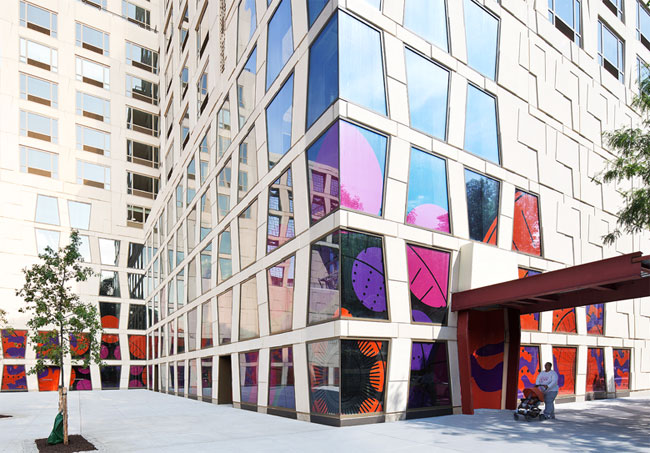

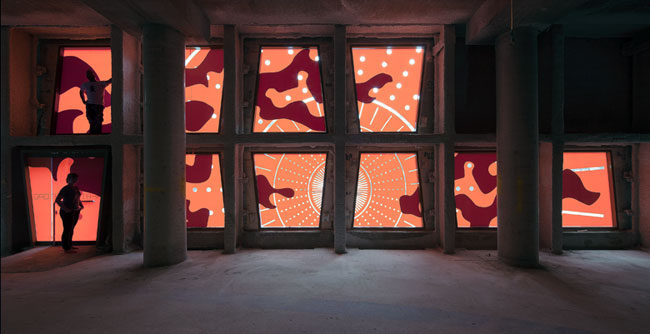

The AfriSans typeface is the core of the MFAA identity system.
Inspired by the building’s architecture, each letterform locks into the
figures around it. To build a fully integrated system, every letterform
had to be drawn and programmed twice: opening up and opening down. Each
headline makes a uniquely Museum for African Art tesselating statement.




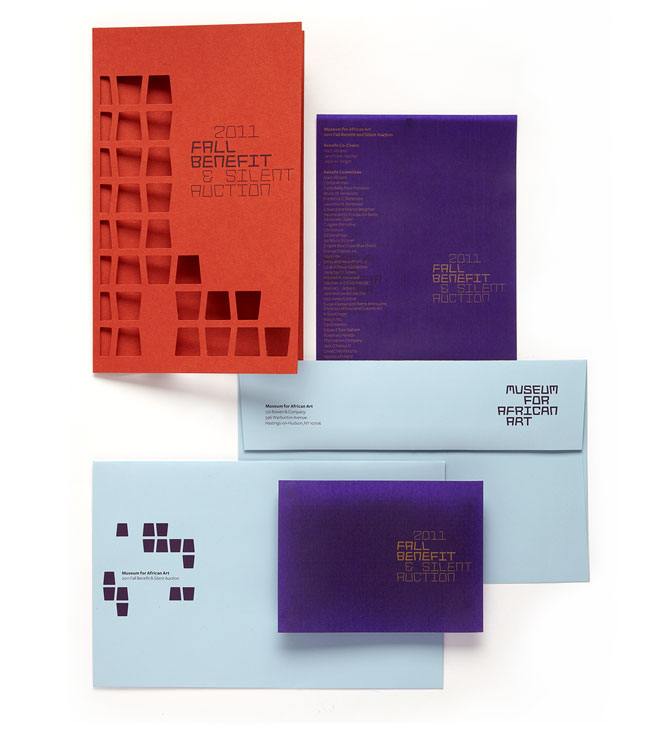
Fall Benefit & Silent Auction, invitation system

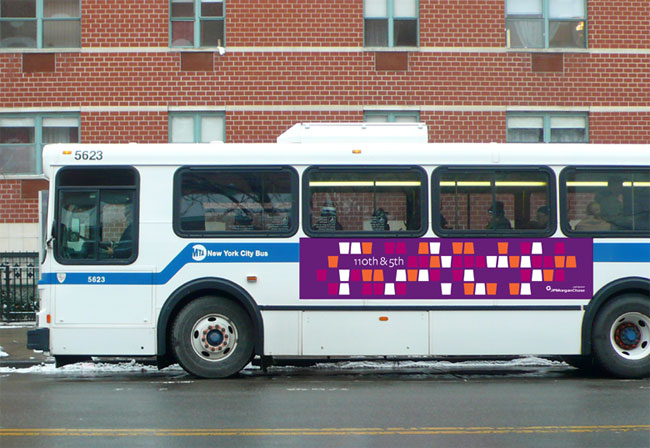


Capital Campaign, customisable consistency

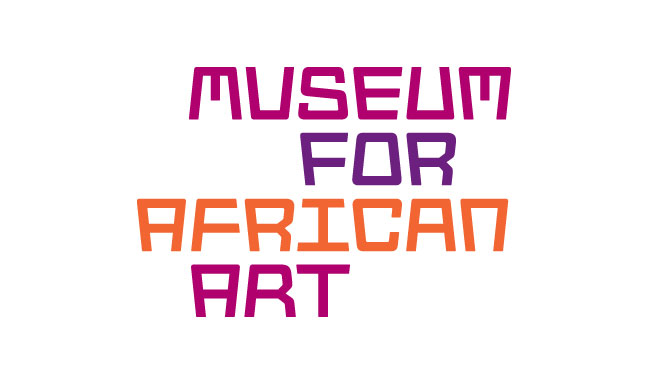
Design: Jennifer Kinon, Bobby C. Martin Jr.
Typography: Jesse Ragan
Photography: Ari Burling
Typography: Jesse Ragan
Photography: Ari Burling
It had to be colourful if it was going to be for African art. I think this whole project has been executed beautifully, especially the invitations- the colour type over the block colour packaging works extremely well, whilst the skinny type pushes the design into the 'current'.
Ink Copywriters. Contributed by Sophie Eyles of Bath-based Mytton Williams.

Witty wordplay to introduce those who play with words.
Ink,
a new team of copywriters, needed to create a visual identity to launch
the company. The identity had to appeal to ‘the country’s best and most
cynical designers.’ It also had to be practical and affordable.

The design solution was to focus on the words, not imagery. By using
bold, witty type and allowing the copy space to breathe we were able to
communicate the personality of the company and show-off its copywriting
skills.
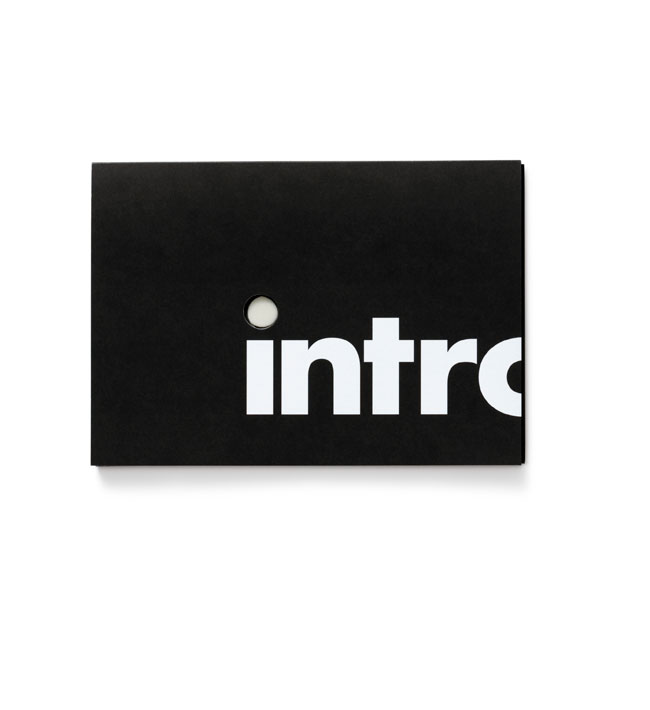

An exclamation mark was added to the company name to create a strong
and memorable logo. We used one typeface, Futura and two colours, black
and grey.
The distinctive identity, personality and launch material has helped
the company to rapidly establish itself and gain recognition. Having
created the Ink identity, and helped communicate its quirky and
individual personality, we have continued to work with the company on
digital and promotional material.
The latest project has been the creation of a significantly upgraded
website. This features the key aspects of enhanced SEO and further
development of the brand identity and personality.
Packaging and Promotion:
Another Example.
Promotional material for Another Example:
Stark/ Contrast/
Packaging and promotion:
Promotion:
A campaign to launch the new membership scheme for the Design Museum.
Wedding invitation
Letter pressed 4 page wedding booklet/ invite and RSVP card design. The full job was printed by hand using laser engraved metal plates by Generation Press. I love the texture of the stock against the print.
GFSmth's extensive mailing programe helps keep Designers & Printers right up to date with new ideas, new papers, new promotions and the latest in print and production techniques:
Would also work with branding and identity. This mail out is promoting a specific service within GFSmith, whilst branding at the same time.
'Independent British paper company GFSmith are proud to launch its new digital paper promotion named Print Test. Always keen to offer a service beyond simple duty stocks, GFSmith’s papers are at the forefront of the minds of their customers. To create visual impact, each copy of the digital Print Test promotion is unique (edition of 10,000), and the innovative process combined coding with pre-determined colour palettes, resulting in vibrant, colourful and dynamic illustrations fully embracing the dynamic digital print medium. Generative illustrations and process photography by FIELD, design by SEA.' Sourced: http://www.itsnicethat.com/articles/gfsmith-print-test
Malibu Illustrative ltd edition:
Publishing and Editorial:
'Wallpaper* Anniversary Issue
Wallpaper* and GFSmith commissioned 15 designers to produce a bespoke cover around the concept of 'Wallpaper* Famous for 15 years'. In the true sense of bespoke, the process employed the HP Indigo digital printing system in order that each cover could be printed on a different Colorplan stock.'
Wallpaper* and GFSmith commissioned 15 designers to produce a bespoke cover around the concept of 'Wallpaper* Famous for 15 years'. In the true sense of bespoke, the process employed the HP Indigo digital printing system in order that each cover could be printed on a different Colorplan stock.'
Generation press collab for Wallpaper* magazine.
I love the material that has been printed onto for this book. Unfortunately the source is in another language so I can't find out much information on it. However, the colour scheme is calming yet holds authority- holding your attention. Remember simple can be a good thing!
Information and Wayfinding:
Love the type and shapes used here, along with the simple use of monochrome colour. Important for informative design- has to be clear and readable, but also, make an impact.
Copernicus Science Centre
Contributed by Katarzyna Maciąg of Warsaw-based Mamastudio.

The Copernicus Science Centre
wayfinding system was designed to highlight the building’s architecture
and its surroundings in a subtle but clear way. The designers’ task was
to come up with a unique, custom-made system that would immediately
create associations with the Copernicus Science Centre structure. The
characteristic form of the building was used by Mamastudio as a source
of inspiration. The irregular forms that were visible on architectural
plans have been repeated in the shape of information modules, signs and
icons. The typography used (Museo) repeats the shapes and rhythm of the
icons to ensure further consistency. Associations with the Centre were
additionally enhanced by the usage of the colours present in the
institution’s identification system.
The Copernicus Science Centre in Warsaw is built on an open plan
which means there are a few walls on which signage could be placed.
Mamastudio’s solution was to create special three-dimensional and
free-standing forms of whose shapes are inspired by the architecture and
which are used as a source of direction. Maps and plans placed on the
blocks help visitors find their way in the science centre.
Minimal use of colours, simplicity and consistency of design ensured visibility on the multi-colured background of numerous exhibitions and often changing exhibits.
Minimal use of colours, simplicity and consistency of design ensured visibility on the multi-colured background of numerous exhibitions and often changing exhibits.
The system is intuitive and easily navigable, noticeable in two
languages (Polish and English) and clearly recognizable without being
overwhelming or driving attention away from the exhibition.

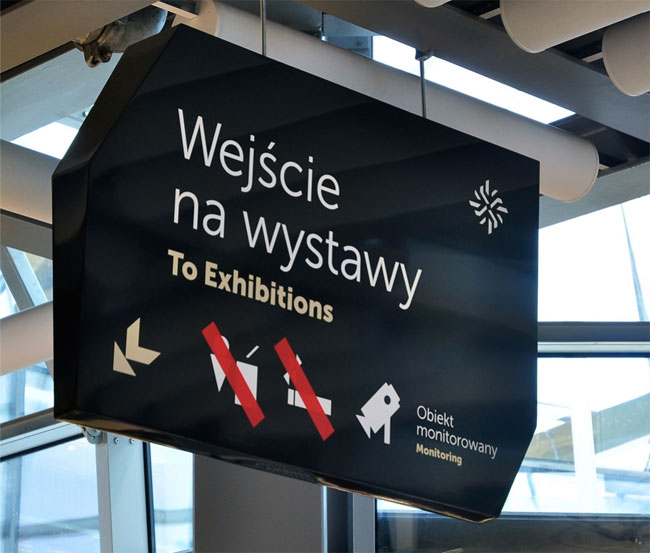
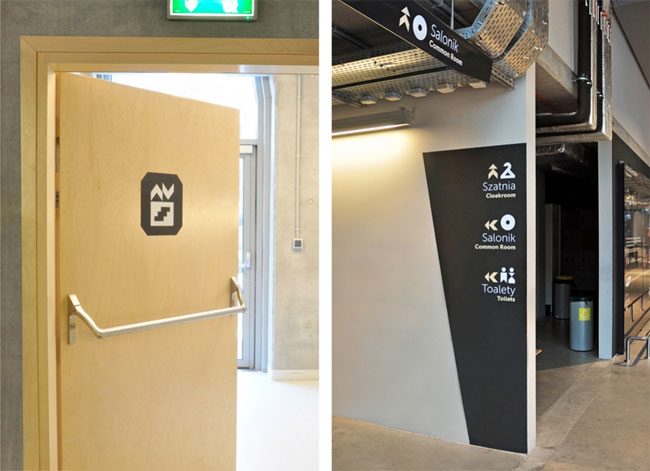





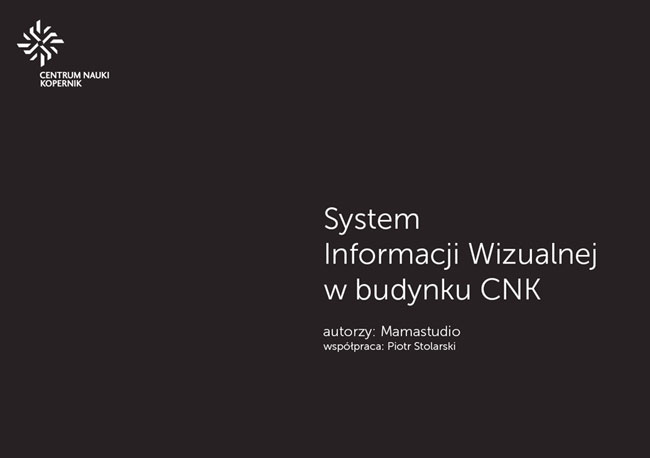
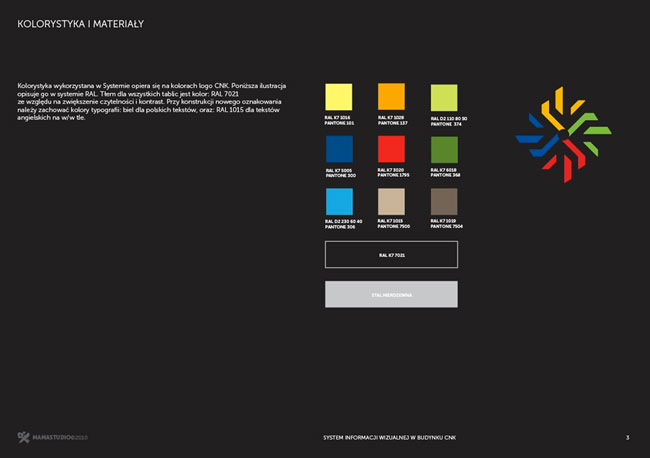
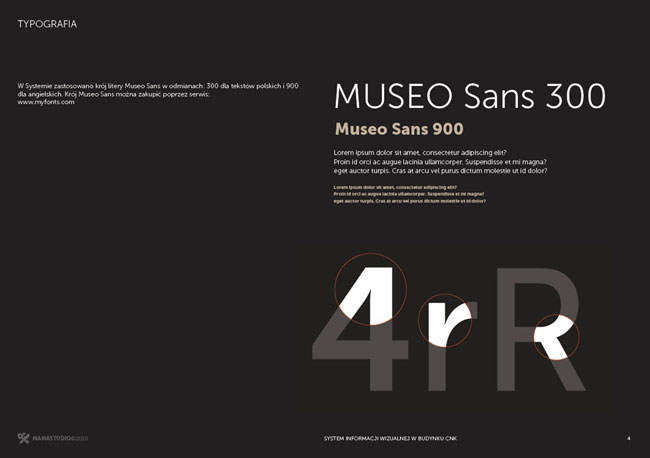





Wayfinding system for The Copernicus Science Centre, author: Mamastudio www.mamastudio.pl
Art Direction: Magdalena Ponagajbo, art director & partner, Mamastudio
Three-dimensional forms created by Piotr Stolarski
Art Direction: Magdalena Ponagajbo, art director & partner, Mamastudio
Three-dimensional forms created by Piotr Stolarski
Museo Tamayo. Contributed by Rob Giampietro, principal at New York-based Project Projects.
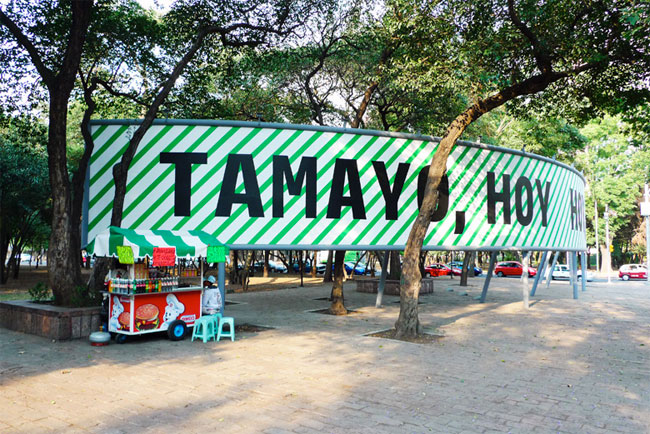
Located in Mexico City, the Museo Tamayo is a contemporary art museum that also houses at its core a collection of works by Mexican artist Rufino Tamayo.
Under its new director Sofía Hernández Chong Cuy, the Museo Tamayo
has refocused its program to present a wider range of activities
including programming, events, and commissioned projects.
Project Projects designed an identity for the museum and a publication system for its in-house magazine, “Rufino.”
In the identity, “Museo” is signified by an angled “M” that floats
within each design at different positions. The resulting identity exists
in a perpetually shifting state, subverting the assumed authority of
the singular, monolithic institutional identity by offering one that is
responsive, dynamic, and hybrid in its place.



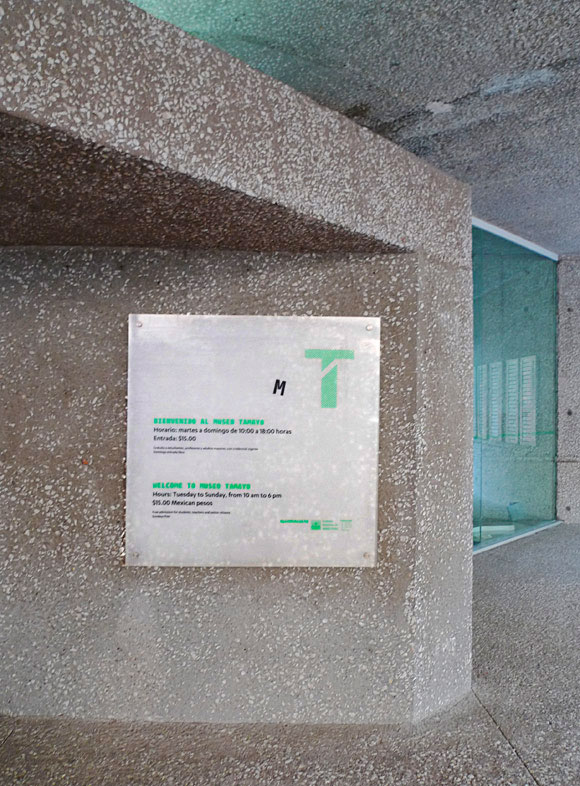


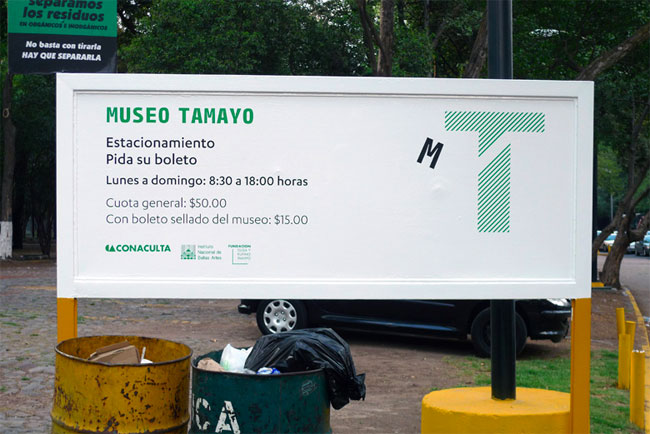
Project Projects
is a design studio focusing on print, identity, exhibition, and
interactive work with clients in art and architecture. The studio was
founded in 2004 by Prem Krishnamurthy and Adam Michaels; Rob Giampietro
joined as a principal in 2010.




















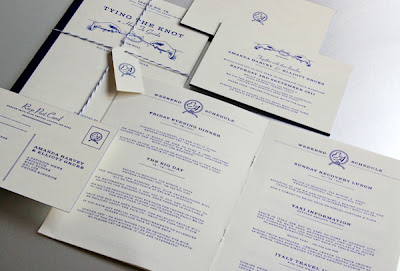










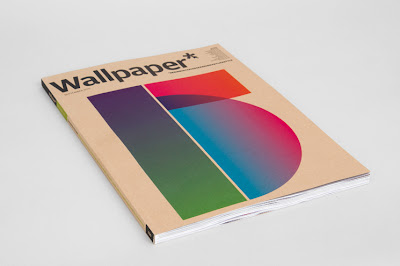










No comments:
Post a Comment